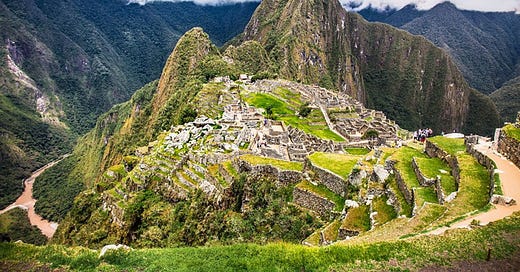🇵🇪 Peru Election: Will the Corruption Finally End?
Hello! Welcome to another edition of Inside The Newsroom and the second election newsletter of the year. This past weekend saw Peru go to the polls in a crucial election (are elections ever not crucial?) that centred on corruption. While early results point to a heavily fragmented legislature and no majority winner, we can still take a look at what caused this snap election and the most important issues facing Peruvians.
Enjoy 🤓 🇵🇪

Why Was This Election Called?
President Martín Vizcarra dissolved Congress in September in a highly controversial yet necessary move. Vizcarra became president in March of 2018 after his predecessor Pedro Pablo Kuczynski, commonly known as PPK, resigned amid a series of corruption scandals (more on that later). Vizcarra got to work immediately, calling a referendum to overhaul the country’s political system. The questions asked on the referendum ballot paper included whether voters wanted to 1) change the skewed system used to appoint judges and prosecutors 2) toughen laws on electoral campaign financing by adding criminal penalties and 3) limit legislators’ terms by banning immediate re-election to Congress. The measures all passed.
But Vizcarra then became entangled in a bitter year-long battle with the rightwing Popular Force party, who held 73 of the 130 seats and refused to back his anti-corruption reforms. The former engineer was left with no other option than to call an election, something that was approved by 80 percent of the country.
Victory For Vizcarra?
The first thing that stands out from preliminary results released Sunday night by Peru’s election office, was the sheer volume of parties that won meaningful slices of the electoral pie. Seven parties received at least five percent of the vote, the threshold needed to enter Congress, while a further 13 parties took home more than one percent. The fragmentation is significant as it now means a handful of centrist parties that support the president’s anti-corruption reforms can create an alliance in order to form a majority.
As for Popular Force, the party who stood in the way of such reforms pre-election, they were dumped in droves by voters. Initial results suggest they won between seven and eight percent, a hefty fall from the 36 percent they gained in 2016. The main reason for the party’s plight is leader Keiko Fujimori’s alleged acceptance of $1.2 million in illegal campaign funds from Brazilian construction giant Odebrecht (more on that next). The daughter of former Peruvian president Alberto Fujimori, who himself is serving a prison sentence for corruption and human rights abuses, will shortly hear whether she will go to jail to await trial.
Peru’s Long History With Corruption
As of today, Peru ranks 101st from 180 countries in Transparency International’s Corruption Perceptions Index 2019. Remarkably, almost all of the country’s former presidents are either facing prison time or already serving. The aforementioned Alberto Fujimori (1990-2000) has been convicted four times for a total of 44-and-a-half years, but Peruvian law mandates that all charges must be served simultaneously, with a maximum 25 years imprisonment. Our friend PPK (remember him?) pardoned the then 79-year-old Fujimori in 2017 on health grounds, but the Peruvian Supreme Court overruled the decision a year later. I hope you’re still with me because we are seriously only just getting started…
Alejandro Toledo (2001-2006) was arrested in California in July of last year and ordered back to Peru to face corruption charges relating to, surprise surprise, the Odebrecht scandal. Then we have Ollanta Humala (2011-2016) and his wife Nadine Heredia who served nine months last year, and lastly our old chum PPK (2016-2018) was forced to resign the presidency and is currently in jail waiting for prosecutors to prepare their charges. Oh, I forgot to mention that Alan García, who served as president from 1985 to 1990 and then again from 2006 to 2011, shot himself in the head last year to avoid facing preliminary detention over accusations related to... Odebrecht.
César R. Nureña and Federico Helfgott, NACLA
So What’s Next For Peru?
Well, I hope you like elections, because Peru will go back to the polls next year in its routine general election held every five years. What that means is that the 130 seats the country just voted for will be up for election once again. But not all is lost, and this weekend’s election was extremely important. If most political analysts are correct, then President Vizcarra will be able to finally push ahead with his anti-corruption policies, which will in turn set up a positive base for him and his allies heading into 2021. Okay, I’m exhausted. Fuck corruption.
Thanks For Reading
Thank you for making it to the end. If you enjoyed finding out about Peru’s election, please give us a like by clicking the ❤️ at the top. That way I’ll appear toward the top of many algorithms to help other people find this newsletter. Thank you 🙏
Next Elections…
Feb 8: Ireland
Feb 9: Azerbaijan and Cameroon



